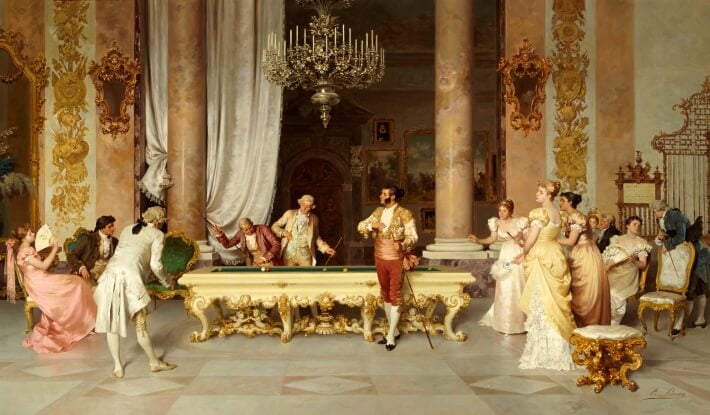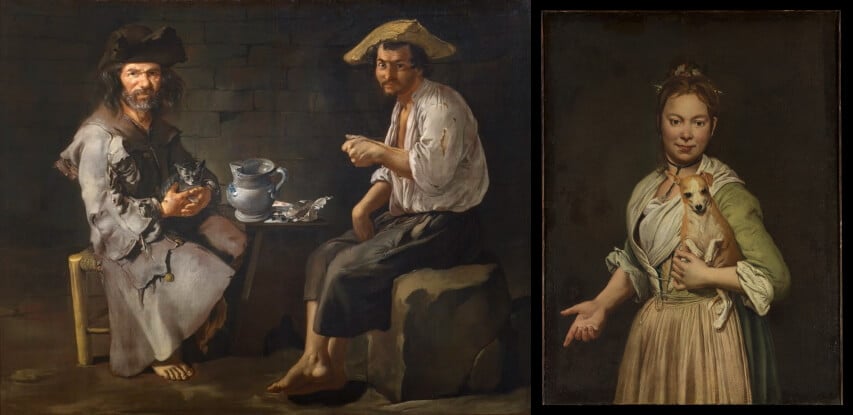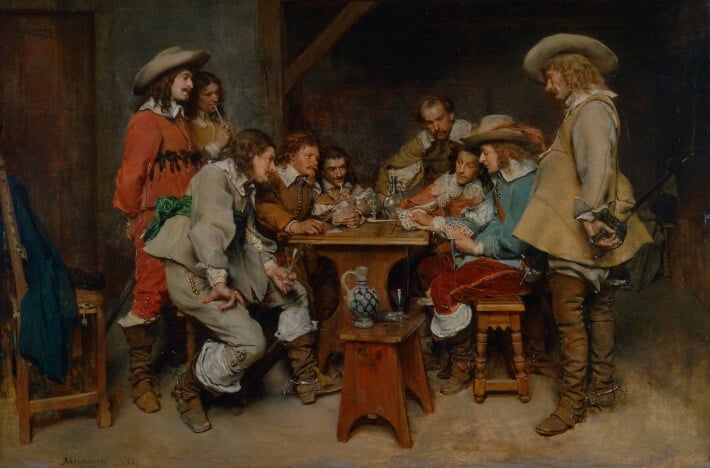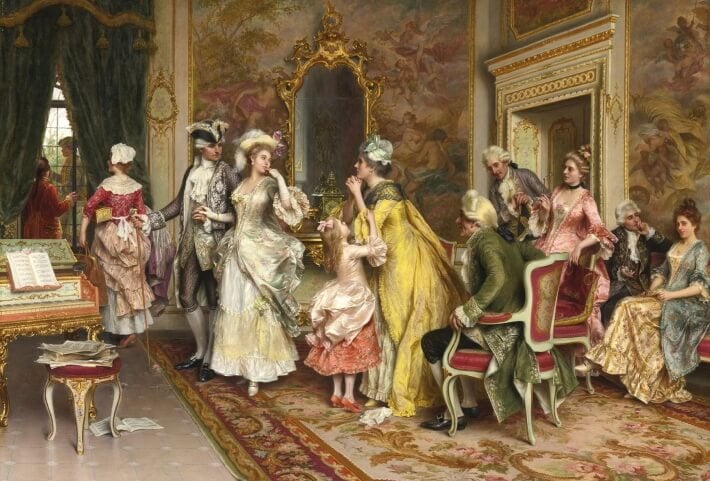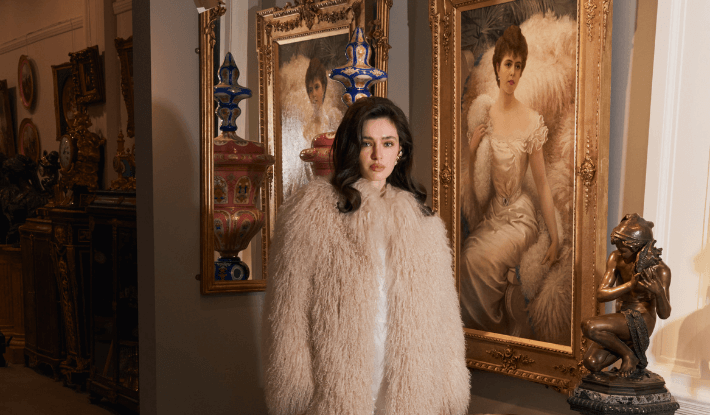One of the most beloved styles of art in the 18th and 19th centuries would have to be that of Italian Genre paintings.
Occupying a niche between the traditional styles of Old Master paintings and the decorative qualities of antiques and antique objects more broadly, they offer everything one could hope for in an antique and historic work of art.
Exceptional artistry, beautiful compositions, and masterly use of tonality and colour come together to produce works with an unparalleled reassuring and heart-warming quality. Here is our guide to the world of Italian Genre painting. To start, we take a look at what we mean by ‘genre painting.’
What is genre painting?
The term 'genre painting,' is first and foremost very broad. A whole host of artworks can be considered ‘genre’ scenes; in fact any painting that is not overtly religious and shows ordinary people, or nobles, engaged in mundane activity could be considered a ‘genre’ work, and these have existed for many centuries.
In Italy genre scenes have existed since as far back as the likes of Annibale Carracci (1560-1609), a popular Renaissance master, who painted both religious subjects and scenes from daily life, such as The Butcher Shop, which now hangs in the picture gallery of Christ Church College, Oxford.
Butcher’s Shop, 1580, by Annibale Carracci, a Roman master of the Late Italian Renaissance. Many early genre paintings attest to a fascination with the macabre: dark, shadowy paintings often with a deathly obsession – a million miles away from whimsical works of the high Rococo.
However, it took until the Italian Rococo period for genre painters to really come into their own, and to make genre painting the defining part of their oeuvre, as opposed to only a part of wider whole.
Artists such as Guiseppe Maria Crespi (1665-1747), and his pupils Giovanni Battista Piazetta (1682-1754) and Pietro Longhi (1701-1785), both of whom have works in the National Gallery of London, showed many of the early signs of emerging importance and popularity of genre scenes. But what we would really like to share with you here are genre paintings as they appear in the Italian Rococo period, specifically the works of artists of the nineteenth century, across whom we see a coherent visual language and style for depicting scenes mundane, and not so mundane! Italian life.
The Italian Baroque and the origins of the Italian Rococo
To understand and appreciate the importance of Italian genre painting of and around the Rococo period, we first need to understand the Rococo itself, and how it differed from the preceding styles, particular the Italian Baroque.
The Italian Rococo was a hugely important artistic and architectural movement across the whole of the country. It grew out of the Baroque – indeed it was often called the Late Baroque – but it differed in subtle, yet profound ways.
The Rococo art was a widespread European phenomenon that was born in France in the 1730s. It began as a reaction against style of the Louis XIV period, which was characterized by excessively formal approaches: rigid, repeated Baroque themes and motifs, with little room for any sort of innovation or deviation.
In France, the divide between Baroque and Rococo, between Louis XIV and Louis XV, is clear and obvious. In Italy, however, it was far more subtle. The Italian Baroque was a beautiful, expressive, powerful movement, which had a huge amount of room for creativity and innovation, as demonstrated by the artistry of towering figures such as Caravaggio (1571-1610) and Bernini (1598-1680). As a result of the more expressive nature of Italian Baroque, the Italian Rococo was able to grow from it more smoothly and develop with much greater connection to the past.
Bernini’s L’Estasi di Santi Teresa, c.1647-52, in the Cornaro Chapel of La Chiesa di Santa Maria della Vittoria, in Rome. It is hard to think of a more beautiful, sensual, and expressive work of Baroque art than this beloved masterpiece. Note too the magnificent gilt beams of light behind the group, a motif used with many a work of Bernini, and one carried over into the Rococo period.
When it comes to the early Italian Rococo period, it is often hard to distinguish when something is Baroque or whether it is Rococo; indeed this is particularly true in the realm of architecture, as demonstrated by the ceiling of the ballroom of the Ca’ Rezzonico, a palazzo often held up as an example of buildings employing both Baroque and Rococo styles.
It is hard to say where the Baroque ends and the Rococo begins: the beams of light in the centre makes one think of the rays of light in a Bernini sculpture, while the use of C-volutes, rocaille shapes, and asymmetry are tell-tale signs of the Rococo. Often the difference is simply one of mood or overall feeling: the Baroque is serious and profound, the Rococo often whimsical, more relaxed, and much less visually taxing on the viewer!
The ceiling of the Ca’ Rezzonico ballroom, with The Chariot of Apollo by Giovanni Battista Crosato (1753); an example of architecture incorporating both Baroque and Rococo elements.
The Shift from Baroque to Rococo in Italy
The Baroque art of Italy which preceded the Rococo produced some true artistic masterpieces, to be sure. The artists of this period had distinguished themselves from the Renaissance artists before them by the intensity of their work: the bold use of colour, of shadow, and the rich array of human emotion and anguish shown in their paintings.
They had, however, languished in the shadow of Caravaggio and his successors for many decades. While it was revolutionary in his time, the magnificent chiaroscuro, unparalleled fidelity to nature, and raw emotional intensity of Caravaggio’s work was not something that many could hope to replicate, or improve upon, thus Italian Baroque art needed a new direction.
The Cardsharps, by Michelangelo Merisi da Caravaggio, c.1594, a rare genre painting by the great Baroque master. Note how much narrative Caravaggio is able to infuse into a scene with only three figures, conveying all the brutal realism of duplicitous street life. Few could match or surpass Caravaggio’s genius and brilliance for many decades, if not centuries, thus genre painters had to forge their own path.
In the eighteenth and nineteenth century they found it. Artists embraced the freer, more gentle, and more heart-warming style of the Rococo, and they did so in essentially two stages. One: artists changed subject, moving from religious themes to depictions of everyday life. And two: scenes of everyday life were elevated, idealised, and glamourised, particularly by artists of the nineteenth century.
Early Genre Painting Masters
Artists like Giacomo Ceruti (1698-1767) departed from the constant, and at times excessive, use of religious compositions and subjects. They turned to real-life for inspiration, seeing the rich potential of every-day people, their struggles, emotions, and actions to inspire their art, finding an untapped well of inspiration around them.
Ceruti, often known as Pitocchetto – ‘the little beggar,’ – for his many paintings of humble peasants, farmers, and workers in rags and simple clothes, applied the artistic practices of the Baroque to a new approach and subject. He embraced all of humanity in his art, depicting his subjects not in an idealised fashion like later genre painters but with an impressive air of dignity, regardless of status or wealth. His Woman with a Dog is a portrait that characterises much of his oeuvre: deeply sympathetic and captivating, yet without glamourisation or obfuscation.
Two beggars, c.1734, and A Woman with a Dog, 1740s, by Giacomo Ceruti. The first, in the Fondazione Brescia Musei; the latter, the Metropolitan Museum of Art, New York.
While Ceruti shunned the glamourisation and beautification of his subject, others did not follow his approach of conveying the grandeur and dignity of his subjects in an understated fashion. Ernest Meissonier (1815-1891), for example, a French artist who had a strong influence over many Italian Rococo genre painters, was a great history and Royal portrait artist, as well as genre painter, and as such his genre scenes are somewhat more conventional, and more formal in approach.
His art, much praised by the likes of English artist and critic John Ruskin, is Classical in style, and depicts much more upright or wealthy figures than the like of Ceruti, and with significantly more exuberant and expressive use of colour. His genre paintings, such as A Game of Piquet, or Innocents and Cardsharps, depict large groups of people engaged in common and well-known recreational acts like playing cards – scenes that could be easily reproduced.
A Game of Piquet / Innocents and Cardsharps, by Ernest Meissonier (French, of whom major Italian genre painters like Francesco Beda, were followers).
Great Italian Genre Painters of the Nineteenth Century
Thanks to artists like Ceruti, who pioneered Italian genre painting while drawing upon the Baroque, and artists like Meissonier who were more open to the glamour of the Rococo, the window was now wide open for artists of the 19th century to produce what we would recognise as quintessential Italian Genre paintings.
Francesco Beda (1840-1900) was a follower of Meissonier, and his art embodies all the instantly recognisable aspects of traditional, mainstream Italian Rococo genre painting. The Game of Billiards (shared here in the title image) and The Chess Game, which was infamously stolen from a private collection in London, are prime examples of his output.
The Chess Game c.1880, by Francesco Beda. A quintessential Rococo genre painting by one of the style’s most prolific exponents.
Works by Beda are unashamedly flamboyant, proudly set in magnificently grand palatial interiors, with aristocratic figures in equally sumptuous dress, engaged in aristocratic past-times such as board games or self-referential activities like painting and modelling.
Another major exponent of this style was the brilliant Gaetano Chierici (1838-1920). While the likes of Beda concerned themselves with the lives of the aristocrats, Chierici preferred a more humble choice of subject.
Born in the rural town of Reggio Emilia, Chierici began as a landscape artist, painting the scenery around his hometown; however, he rapidly earned an international reputation for his paintings of humble farming lifestyles. His paintings, set in farmhouses, barns, and cottages, depicted peasant lifestyle with wonderful character, humour, and charm. His settings were painted with exquisite, minute detail, and the compositions he placed within them are witty, entertaining, and captivating without exception.
The simple, humble, yet beautiful painting of the Child feeding her Pets (1872) is a wonderful example of his work, as is the panting Una Catastrophe (also known in English as Surprised!), 1887, which shows a child sent tumbling across the canvas by a flock of hungry geese – his superb artistic skills (see his self-portrait in the Uffizi, Florence) and cracking sense of humour have ensured his lasting popularity.
Una Catastrophe, 1887, private collection and Child feeding her Pets, 1872 in the Widener University Art Museum Alfred O. Deshong Collection, by Gaetano Chierici.
Beda is an artist whose work we are often fortunate enough to have in our collection at the Mayfair Gallery; another artist with whom we enjoy the same privilege is Arturo Ricci (1854-1919), who painted in a similar fashion. His works, such as the one shown below, were readily purchased by the post-Industrial Revolution wealthy elite, and depict large groups of aristocratic figures, in even grander settings than Beda’s. Note, however, his superb skill in painting portraits, figures, and expressions, and the facility with which he creates narrative, that help make him perhaps the most Rococo of all genre painters.
L'Attesa or The Godchild by Arturo Ricci, late 19th century, oil-on-canvas.
Occupying somewhat of a middle group between an artist like Beda and someone like Chierici we have Antonio Ermolao Paoletti (1834-1912), a Venetian artist, who escaped the confines of lavish Rococo interiors and instead painted most of his works in and around the canals of his home city. His paintings have a wonderful, enjoyable, welcoming relaxing air to them; the openness, beauty and idyllic qualities of life in Venice are keenly conveyed. Like Chierici, he often chose children for his subjects, which helped to infuse his works with the innocence and playfulness of childhood.
A prime example of Antonio Ermolao Paoletti’s oeuvre: Children Feeding the Pigeons in St Mark’s Square, late 19th century. In many works, the grandeur of the setting is offset by the whimsical and mundane actions of the childish figures who populate the scene.
Genre Painting Further Afield
We hope to have given you an overview of the paintings that we collectively call Italian Genre art, in all their flavours, themes, and styles, from the Renaissance through to the early twentieth century.
It goes without saying that Italian genre scenes did not exist in a vacuum. Genre art was widespread and remains widely loved across Europe, with great artists from Italy, France, Holland, and England to name but a few. In England, great genre artists include Arthur John Elsley, much loved for his idyllic genre scenes of children and their pets: a superb painter of animals, and Frederick Morgan, known for his joyful paintings of domestic bliss.
In our collection at Mayfair Gallery, we are proud to offer a wide variety of genre art, with a particularly strong selection of Italian genre paintings. We invite you to explore our collection here online, and to contact us with any questions or comments, and to visit us in our showroom on South Audley Street, Mayfair, to see some of our highlights in person.




